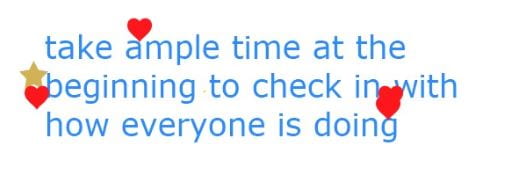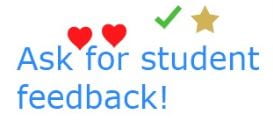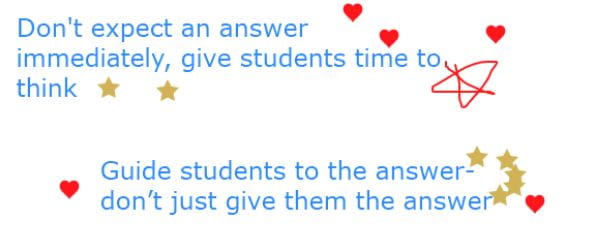One and a half semesters of mostly online teaching down, and at least one more to go in this COVID-altered academic world. As a growing part of the team supporting student learning outcomes, undergraduate peer educators have worked very hard, received training, and honed their skills as facilitators of engaged, compassionate, and student-centered online learning. EVERYONE has had to shimmy up the learning curve to make this last 9 months ‘work’.
At Cornell Engineering, our Academic Excellence Workshop (AEW) facilitators began their transition mid-spring semester when they were asked if they wanted to stay on as undergraduate educators and do their work in the online environment. All 44 of them agreed that they wanted to stay on and help in the most difficult time one might imagine as a college student. By the end of the spring semester 2020, these dedicated young educators had learned so much, faced challenges, and had made a difference for their peers! By the end of Fall 2020, some with 2 semesters online facilitating and training under their belts and some with just one, they used the tools of this new trade – breakout rooms, whiteboards, annotations – to share their hard-won trusted tips. This post will share their sage advice, simply copied from the whiteboard, collated and briefly annotated.
The most common bit of advice was about being comfortable saying “I DON’T KNOW”:

 The first rule of collaborative learning facilitation – the teacher is not required to hold the answers to everything. As peer educators, knowing this allows the time to reach out to other teaching staff on matters of specific process or content. Even more importantly, and this takes some degree of confidence, not knowing the specific answer frees up space to develop ideas together, to
The first rule of collaborative learning facilitation – the teacher is not required to hold the answers to everything. As peer educators, knowing this allows the time to reach out to other teaching staff on matters of specific process or content. Even more importantly, and this takes some degree of confidence, not knowing the specific answer frees up space to develop ideas together, to  involve the group, brainstorm processes and different possibilities with your students. And yes, ultimately we want to provide the right set of details, so a follow up with the group or class after consultation is always the way to end. In the online environment, an online discussion board is a great way to get that closure and feedback when the answers come after the synchronous session is over.
involve the group, brainstorm processes and different possibilities with your students. And yes, ultimately we want to provide the right set of details, so a follow up with the group or class after consultation is always the way to end. In the online environment, an online discussion board is a great way to get that closure and feedback when the answers come after the synchronous session is over.
A close second category of advice was related to CREATING a WELCOMING, OPEN and FRIENDLY ENVIRONMENT:
Peer educators, who have been on the other side of the screen more recently than some of the more experienced teaching staff, know exactly how crucial these bits of advice are! This is even more true in the online environment, where it is easier to be anonymous, harder to feel connected, and where students can be easily distracted away from what you are facilitating.
Learning student names, doing activities to get to know them and help them get to know each other, goes a long way to creating a space where they want to be, feel noticed, and hopefully begin to trust each other enough to be part of the discussions you want to facilitate! While it carries its own different set of challenges, one of the most powerful things about being a peer educator is that you are one of ‘them’. As such, you are approachable and, should be, compassionate.
A little note of self-care here:
Even though your energy goes a long way to creating a climate, ‘checking in’ includes you. This whole time period is  extremely energy demanding, and so while you try and bring your best game as a peer educator, give yourself an out when YOU need it. Ask for help and think of ways to take the pressure off yourself as well.
extremely energy demanding, and so while you try and bring your best game as a peer educator, give yourself an out when YOU need it. Ask for help and think of ways to take the pressure off yourself as well.
The third most offered advice was about how to “WORK THE ROOM” in a zoom session:
In the online environment you can’t just look across the roo m and see who needs your help, or interject a helpful question or hint. Being present and moving from breakout room to breakout room as students are working in groups, lets you intervene and redirect, or even invite others into the conversation. It goes without saying perhaps that these spaces have to be clearly structured before you move your students into them so they don’t spend time spinning their wheels!
m and see who needs your help, or interject a helpful question or hint. Being present and moving from breakout room to breakout room as students are working in groups, lets you intervene and redirect, or even invite others into the conversation. It goes without saying perhaps that these spaces have to be clearly structured before you move your students into them so they don’t spend time spinning their wheels!

Reminding about expectations for teamwork, taking turns to contribute, and the idea of ‘take time, make time’ just before sending your students off to breakouts is helpful. The online environment can create some useful anonymity for shy people (working through the chat and asynchronous discussions) but breakout rooms can be stressful for shy people and frustrating for all, if they are not structured.
A fourth bit of advice: Don’t assume your students are all on the same page and following everything you are facilitating. GET FEEDBACK:
 Just as improving learning outcomes requires giving students regular and honest feedback, so becoming a better peer educator (or any educator) requires getting feedback about how it is going for students. Feedback can be general – about the perceived success of activities you try- and it can be more specific – about whether they understand what you are trying to get across to them. Feedback can be solicited in the middle of a class, at the end, or in the interim between when you see each other using online discussion boards.
Just as improving learning outcomes requires giving students regular and honest feedback, so becoming a better peer educator (or any educator) requires getting feedback about how it is going for students. Feedback can be general – about the perceived success of activities you try- and it can be more specific – about whether they understand what you are trying to get across to them. Feedback can be solicited in the middle of a class, at the end, or in the interim between when you see each other using online discussion boards.

Active learning strategies like ‘think-pair-share’ (using chat in a small class online) as well as polling or clicker questions, can be used at any moment to get students sharing and asking and answering each other’s questions. Asking students, in teams (breakouts), to apply a bit of lecture material to a problem or question helps the group move closer to the same level of understanding. They can also share group feedback afterwards.
Asking students, in teams (breakouts), to apply a bit of lecture material to a problem or question helps the group move closer to the same level of understanding. They can also share group feedback afterwards.
The 5th and last piece of advice from our experienced online peer educators (there is more…..) is FACILITATE COMMUNICATION and THINKING, DON’T JUST GIVE THE ANSWERS:
This is one that is at the crux of collaborative, student-centered learning. Being comfortable with silence is hard in the classroom, but at least you can watch to see if the wheels are spinning. Reading body language and facial expression is so challenging online, and if cameras are off, so are all bets.
But it is even more critical to be comfortable with silence with the lag time time that occurs on zoom, and with the difficulty of knowing whether students are thinking and preparing to answer. Give time for answers to come into the chat. Give time for students to figure out the technology for how to annotate the whiteboard or your presentation when you ask. In breakouts, really encourage cameras on (knowing there are legitimate reasons in some cases students aren’t comfortable with them on) so that you can make eye contact and have a better sense of the level of understanding, and so that you can support at the correct level (a question? a hint? maybe sometimes even the answer). If you end up giving the answer, ask them why the answer you give is the/a right one.
Remembering to enact this set of 5 tips in your classroom will take any educator a very long way to being successful in the online environment. Bravo peer educators, we could not do without you! And best of luck in Spring 2021!





